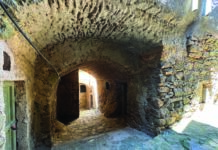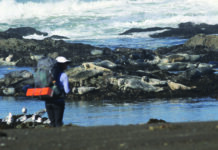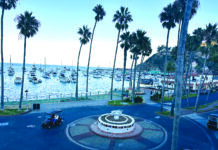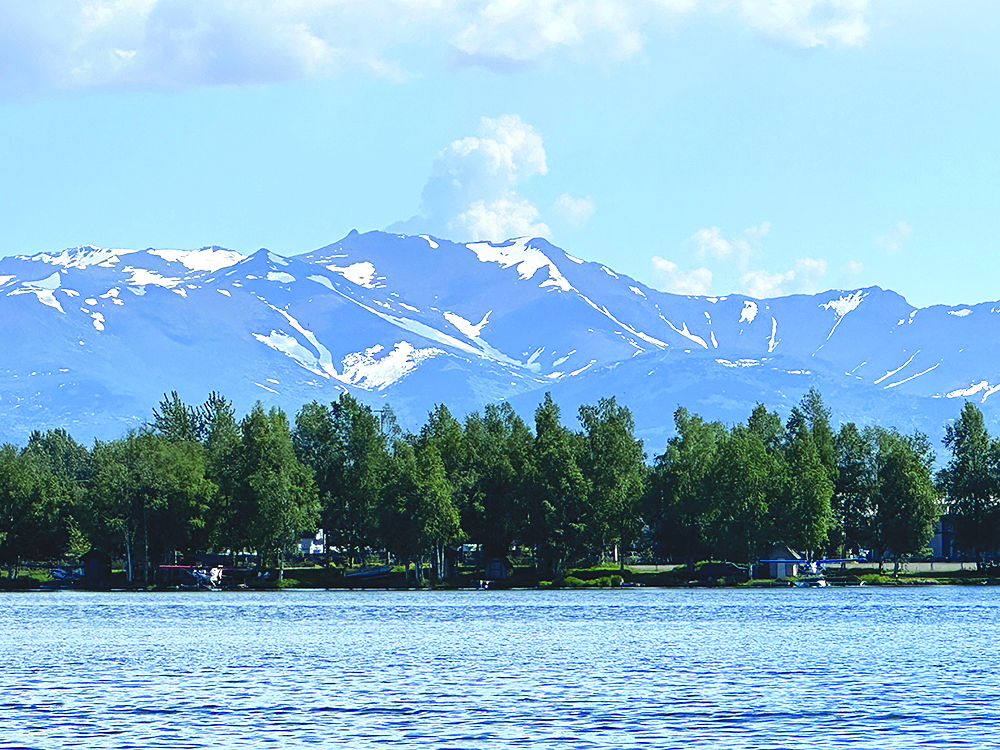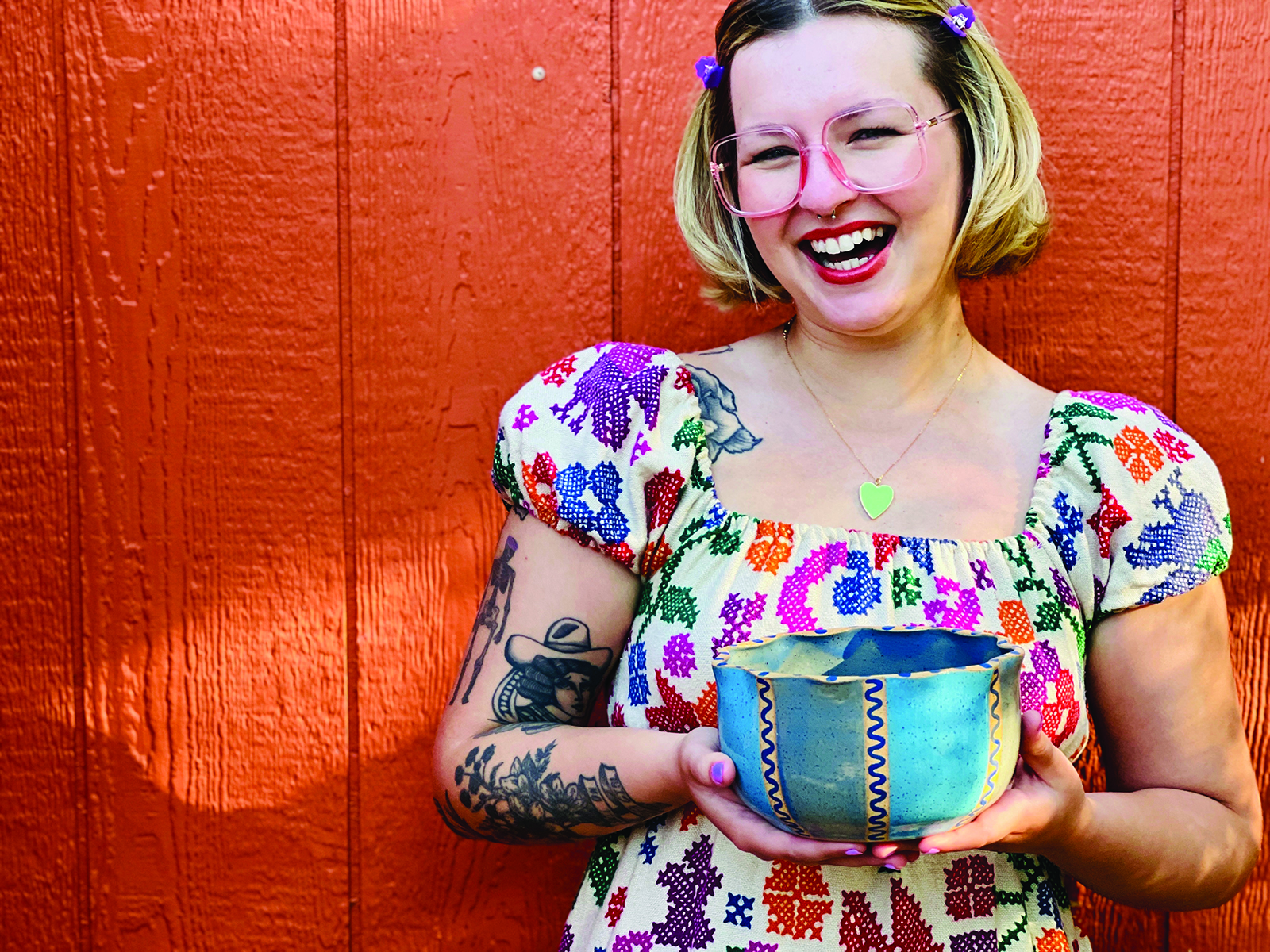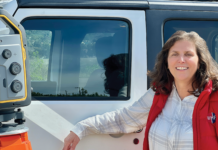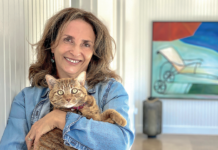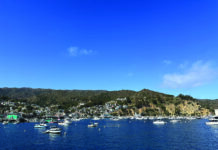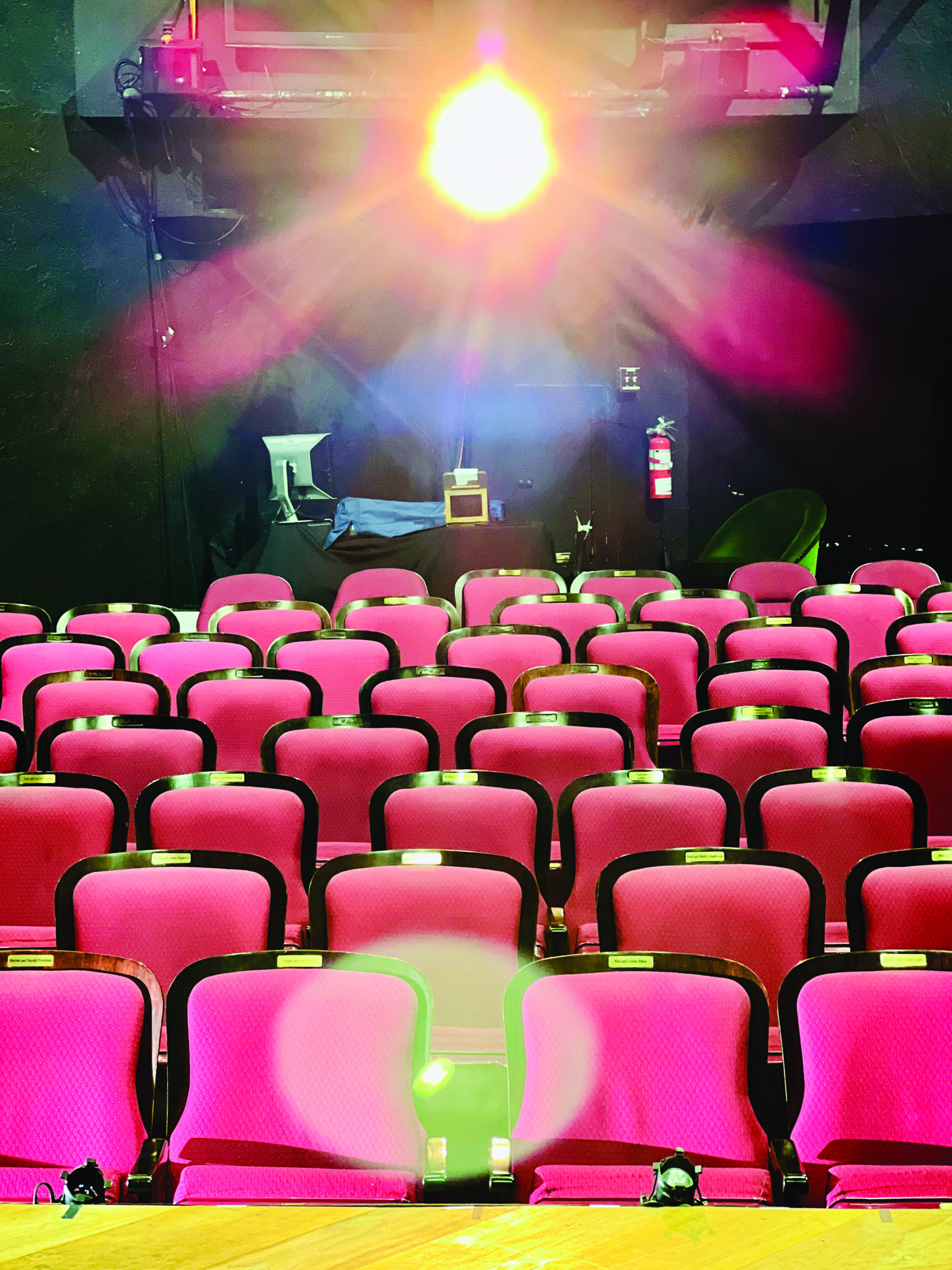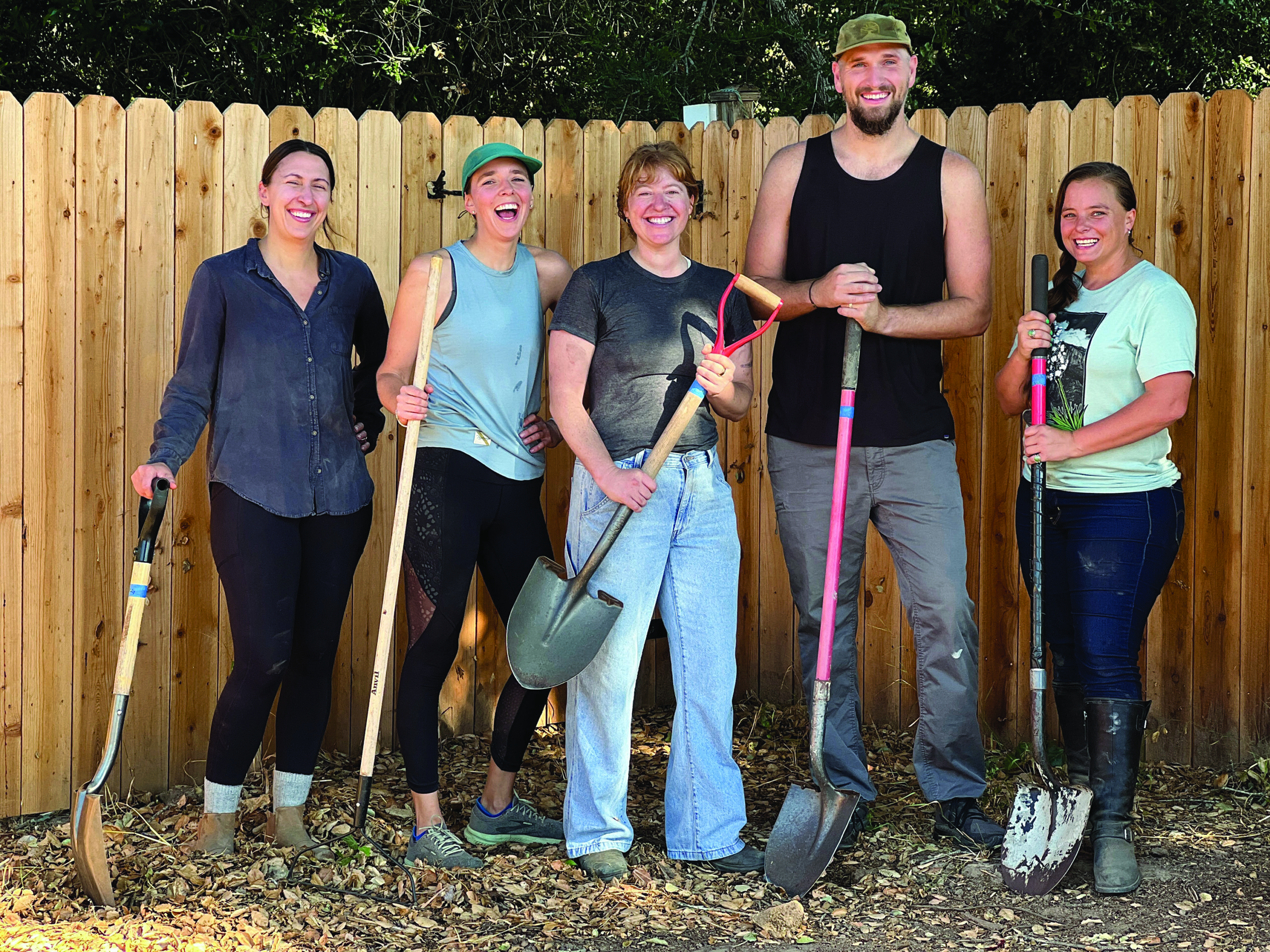by Nancy D. Lackey Shaffer
Local historian Cynthia Thompson is thoroughly versed in all things related to Ventura County. The author of numerous books on local history and a founding member of the San Buenaventura Conservancy, she possesses extensive knowledge of the people, places, things and events that contributed to the establishment and growth of this area. It’s no wonder, then, that Thompson quickly saw the historical importance of the coronavirus showing up in Ventura County. She almost immediately began searching the archives for information related to that other great pandemic, the Spanish flu of 1918. Thompson talked to Ventana Monthly about the local response to an outbreak, then and now, and what history can teach us as the community continues to contend with COVID-19.
When did you first start to really take notice of the reports about the coronavirus and COVID-19?
“Those who do not remember the past are condemned to repeat it.” – George Santayana, 1905.
In January of 2020, reports of a possible worldwide pandemic piqued my interest. I recalled I had firsthand information about the 1918 Spanish flu in my library of the Gould Family Archives. I pulled out a scrapbook prepared by a family member and was amazed by the 102-year-old authentic newspaper clippings about the Venturan experience with this historic event.
I began to accrue a separate library on my computer for flu-specific articles and felt I would refer to them at another time in the future.
When did you first start thinking about COVID-19 as a historian, and in relation to the Spanish flu?
On March 11, the World Health Organization declared COVID-19, the disease caused by the coronavirus, a worldwide pandemic. I became laser-focused on the Spanish flu that day.
I was shocked by what I learned from my research of the 1918 pandemic. I will outline some of it below, but my overall impression as a historian was, “this is real, and volumes of the same mistakes of 1918 are being made in 2020.”
On March 13, when they closed schools and businesses . . . the constant, fear-ridden question of “when and how will this end?” was uppermost in mind. Shutting down society seemed draconian in nature. But, I learned it is exactly what 1918 Ventura, the nation and humankind have done, over and over again, during centuries of global pandemics. From the Black Death (bubonic plague of the 12th century) through the Spanish flu. Drastically changing human interaction and behavior was the only method that worked on any level.
What were some of the first things you noticed when you looked at the historical records? What kinds of things jumped out at you?
The extreme similarity and differences to today. The scrapbook pages contained detailed descriptions. The total lack of national guidance from the president (Woodrow Wilson), the objection to wearing masks, the competition between cities and states for supplies, the isolation and quarantine . . . It was all there 102 years ago.
When did the Spanish flu first start becoming a public health concern in Ventura County? What transpired to make people — officials, doctors, residents — realize that this was a serious situation?
In October of 1918 (beginning of the second wave), a large carnival came to town. Within six days, people became ill. At first, even prominent doctors denied its existence, but with the sick and dying multiplying with excessive speed, Ventura heard the call to arms. When the October 20 issue of the Ventura Daily Post announced that the Santa Barbara Mission would close for the first time since its 1786 founding, everyone knew this was very serious.
How did daily life change as a result of this flu?
What happened with businesses, schools, etc.?
The changes were immediate. Edith Hobson Hoffman formed a Red Cross Committee. Overnight, schools, churches, poolrooms, card rooms, saloons, theaters and all gathering places were mandated to close. There was a shortage of nurses (because they were participating in the World War I war effort), so families cared for their own at first. Mrs. Charles (Alice Bartlett) organized “Meals on Wheels” for home delivery of food. The Red Cross knew an emergency hospital was needed. Because of contagion, Bard Hospital and a local school were ruled out, but two local churches (which were large, with additional classrooms and kitchens) made the ideal location. Housewives donated soft cloths for wash rags and towels, women volunteered as practical nurses to care for the sick, others shared shifts as office workers, answering phones and keeping records. Mary Philbrick did all the cooking for patients and nurses. Masks were running low, so citizens were asked to make their own, but Cora Sifford and others pitched in. Within days, 75% of the population was masked. On Nov. 15, an ordinance was passed stating that anyone on city streets not wearing a mask would be arrested (there were 30 arrests).
Dec. 22 saw the last emergency hospital patient and children returned to school on the 31st. The town population was 3,800 (compared to approximately 120,000 today) and there were 29 deaths. The community fought two enemies: World War I and the Spanish flu.
How did the Spanish flu differ from COVID-19?
Unlike COVID-19, it killed mostly young people, with most of the deaths between the ages of 10 and 40. It was thought that people over 65 might have had immunity from previous influenza infections. Another oddity was that the outbreak was widespread in the summer and autumn (Northern Hemisphere); influenza is usually worse in winter. Modern analysis has shown the virus to be particularly deadly to young people because it triggered a cytokine storm (an overreaction of the body’s immune system), which ravages the stronger immune system of young adults.
The incubation period was very different as well. The Spanish flu would ignite into symptoms as early as two days after exposure and one could be deceased within 24 hours. Coronavirus takes about 14 days to incubate before showing symptoms.
How did the Spanish flu spread?
The greatest influence to the spread of the disease was world mobility in the time of war. Soldiers took the flu to Europe, spread it through battles and troop movements and then returned, bringing it back with them to every part of America.
There were three waves (with even a fourth one in 1919) of the disease with mutations of the virus progressively making it deadlier than the one before it. By August 1918 in Europe and the United States the virus had mutated to a much more deadly form; October saw the highest fatality rate of the whole pandemic. The third wave — less severe than the second, but far deadlier than the first — spread the flu to nearly all parts of the Earth. In the Spring of 1920, a very minor fourth wave occurred in isolated areas; mortality was low.
Outbreaks would rage in each particular area for approximately three months and then move onto the next vulnerable location. Ventura’s siege lasted from early October to the end of December 1918.
Information didn’t travel as quickly in 1918 as it does now! Was this a challenge for public health officials?
How did they disseminate information to the public about guidelines, best practices, etc. to residents across the county?
The only public health officials on a national scale during the Spanish flu were the Public Health Service that had been established in 1798. However, behind the scenes the position the U.S. government (and President Wilson) took was concealment because it would distract from the effort of World War I. Wilson felt it would translate weakness to the world when America needed to be the strongest nation on earth. The press was intentionally censored in warring countries, including the United States. The most deadly position was the government›s policy toward the truth. President Wilson’s Sedition Act, punishable up to 20 years in prison stated: “It is unlawful to utter, print, write or publish any disloyal… language about the form of government of the United States…”. Government posters urged people to report to the Justice Department anyone “who spread pessimistic stories…. that belittle our effort to win the war.”
But, in 1918 there were some cities that had really fine and courageous leaders. They had really good health commissioners who worked together with mayors, superintendents of schools and the police force. . . . The public health officials were primarily local doctors. A great deal of communication and coordination between townspeople was over the telephone and by word of mouth. Most printed information was through local newspapers.
Did the public object to wearing masks?
Yes, and mostly men. It was very much a man’s world in 1918. Vintage ads show how officials tried to convince people to wear masks. Local governments enforced mask wearing. Many refused, citing it was a threat to their civil liberties (sound familiar?). Men at that time didn’t practice personal hygiene, which was considered feminine, thus a mask reminded them of their mothers or school marms. So local health officials set forth a campaign to re-brand mask wearing as a sign of strength, discipline, personal (read manly) responsibility and patriotism. This is why it is mostly men and boys in posters, ads and cartoons. Successful men in suits were pictured wearing masks.
What was the attitude toward social distancing?
In 1918, the public understood that this was a “crowd disease,” despite the fact that the concept of germs had only recently been accepted. People did social distancing for weeks and months . . . Back then, diseases of all kinds were common: the flu epidemic in the 1890s, a bad polio epidemic in 1916, diphtheria, pertussis (whooping cough), measles, chicken pox, yellow fever, smallpox. People understood when the doctor quarantined them what it meant. Today, we take a pill. Back then, they took to bed and did the hard work of waiting it out.
Experts today worry that prolonged social distancing, even if necessary, just won’wt be sustainable for weeks or months. It is the 100 years of medical progress that has made us resistant to the concept.
How long was Ventura County’s way of life altered by the flu?
For Ventura, it attacked during the peak of the second wave and lasted for two and a half months, from October to December 31. During each wave, it would rage for about three months in each location and then move onto the next.
What precipitated the end of the pandemic?
With no true treatment, the end of the Spanish flu came when it simply burned itself out. It killed everyone it could (50-100 million worldwide) and those that survived attained herd immunity.
What lessons do you think we can take from
history regarding our current situation with COVID-19?
That history tells us what the future will be, and we should listen to it.
The 1918 Spanish flu pandemic was greatly exacerbated in an era before the existence of international public health bodies such as the World Health Organization. Policy makers failed to stop the spread, in fact their actions helped spread the flu more widely by not acknowledging its existence, and a lack of information or guidelines.
Because of business shutdowns and lack of workers, the economic consequences of the pandemic included massive labor shortages and wage increases, just as it is today with COVID-19. In 1918, there were no congressional programs to assist those who were affected. Life limped forward out of the war and the pandemic. It is normal and historically consistent for there to be a recession after wartime because the ramped-up industries to support the war effort come to an end.
However, eventually, the economy rebounds after time. This is true for both World War I and II, and will be true today. . . . Looking to history . . . we will find our way again, as generations have done before us. It is important to remember that the Roaring Twenties followed the Spanish flu pandemic of 1918, one of the most prosperous economic periods of our nation’s history.
If we’re smart, history can be our guide.
My advice? Wear your mask.


